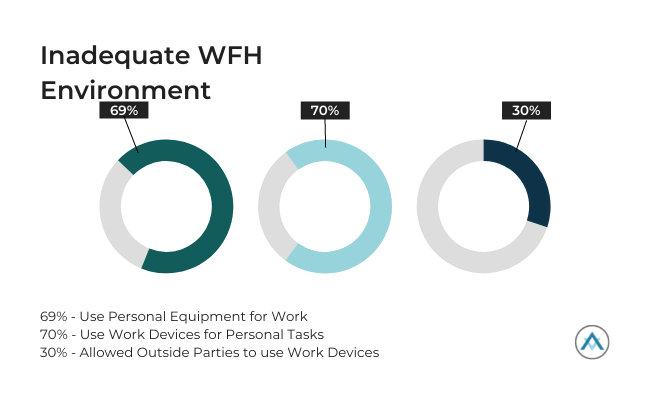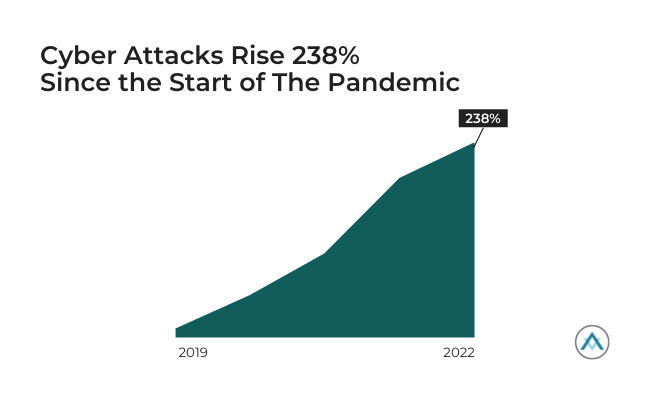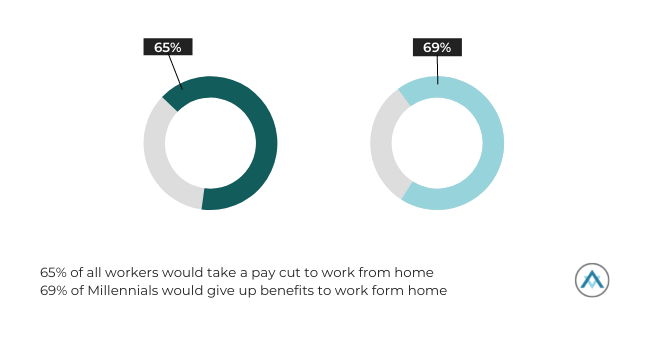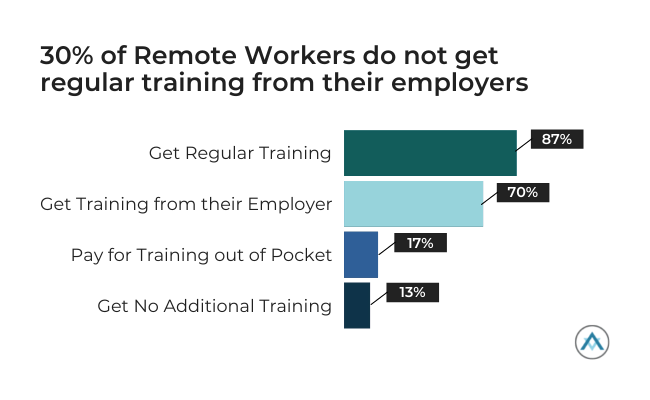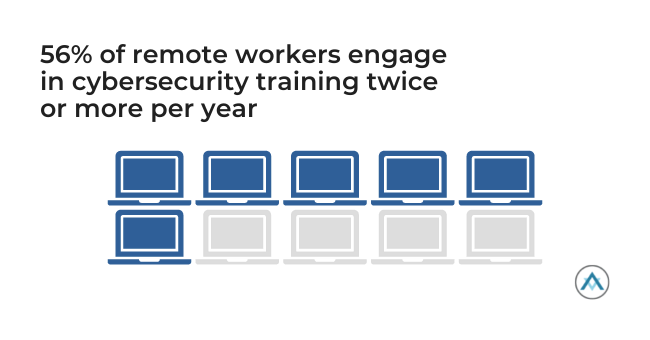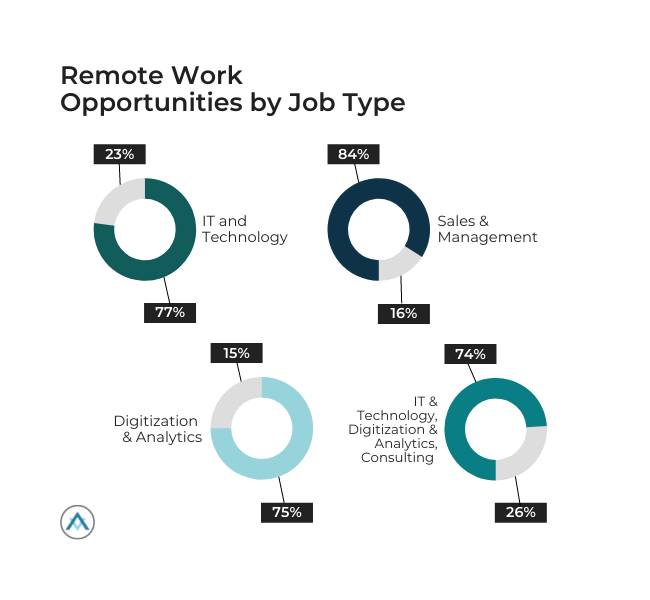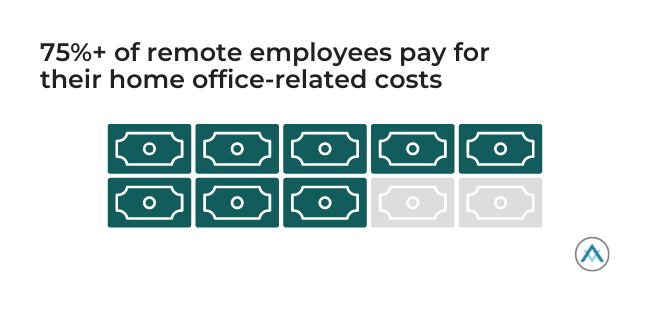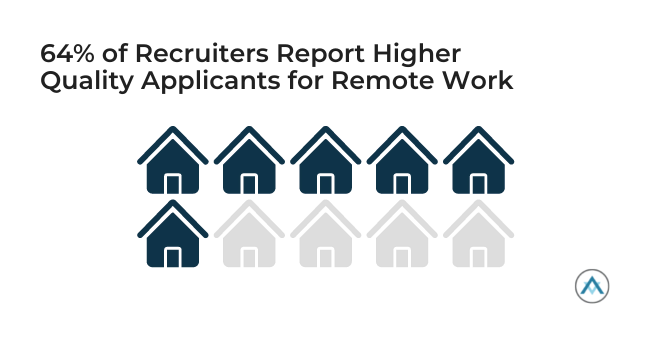We analyzed hundreds of studies with millions of data points to determine exactly what costs a business would incur by continuing remote or hybrid work models beyond the pandemic.
Specifically, we investigated costs associated with cybersecurity, remote workers’ attitudes towards compensation, and the quality of applicants seeking remote work.
References and methods for this study can be found in the Methods and Procedures PDF.
The numbers are intriguing, so let’s get to work.
Our key findings are as follows:
- Home workers are the primary target of criminals as cyberattacks have risen 238% in volume since the beginning of the pandemic.
- 65% of workers would take a pay cut to work from home.
- Commuting 10 hours less per week results in a 20% raise.
- 30% of remote workers do not get regular training from their employers.
- 44% of remote workers engage in cybersecurity trainings once per year or less.
- IT and technology, digitization and analytics, and consulting are the most globally remote professions at 74% or more.
- 75%+ of remote employees pay for their home office-related costs.
- 64% of recruiters able to offer remote work options report higher-quality applicants.
Home workers target of 238% increase in cyberattacks
Since the start of the pandemic, cybercriminals have seized their chance to prey upon companies and workers who scrambled to operate remotely.
69% of those forced into inadequate work-from-home situations used their personal home office equipment for work duties, 70% used their work devices for personal use, and nearly 30% allowed others outside their organization to use their office devices.
When all these factors are added up, the result is a 238% increase in cyberattacks since the start of the pandemic (Security, 2021).
65% of workers would take a pay cut to work from home
When considering costs associated with moving to a remote or hybrid work model, it’s important to assess what your current or future employees would like (and what you can afford) for compensation.
65% of workers would consider a lower-paying position if it meant they could work remotely (Miller, 2021). This is even more true for the coveted millennial market, as 69% of survey respondents would give up on benefits if they had more freedom in their working hours and environment (Steward, 2022).
Commuting 10 hours less per week results in a 20% raise
While it may seem odd that workers would give up on compensation and benefits to work from home, the reality is: workers save money when they don’t have to commute.
A commuter who travels two hours per day, five days per week, saves a total of 10 hours. According to the New York Times, the time saved would result in up to $15,000 per year or more, depending on how much you make (Goolsbee, 2021).
30% of remote workers do not get regular training from their employers
87% of remote workers get regular training, but only 70% get it directly from their employer. The good news about this statistic is, 17% of remote workers care enough about their positions to seek out training on their own.
These activities include online courses, workshops, and professional development opportunities that are often paid out of pocket by the employee (Steward, 2022).
56% of remote workers engage in cybersecurity training twice or more per year
Since the start of the pandemic, remote work has increased the cost of data breaches for an average company by $137,000. However, this could be due to a lack of training. 56% of remote workers receive cybersecurity training twice or more per year.
While this is encouraging, it also means that 44% of remote workers receive cybersecurity training only one or fewer times per year (Steward, 2022). Cybercrimes take many forms and often adapt at an alarming pace. Making sure remote employees are properly trained in cybersecurity safety is of the utmost importance.
IT and technology, digitization and analytics, and consulting are the most globally remote professions at 74% or more
When considering remote work permanence, it’s a good idea to assess which of your company’s positions are most suited to remote work. Jobs in IT and technology are usually the first thing to come to mind – with good reasons.
77% of IT and technology jobs can be done remotely. Digitization and analytics come in a close second at 75%. But some positions that may not come to mind immediately are positions such as sales and management. 16% of employees who work from home are managers (Babu, 2022).
75%+ of remote employees pay for their home office-related costs
Another cost-related concern for moving to remote work is who pays for all the needed home office equipment and supplies? Currently, over 75%+ of work-from-home employees pay their own way.
Some larger companies, like Google and Shopify, offer a one-time $1000 stipend for new employees. Others offer incentives like paying monthly internet bills or discounts on gym memberships. While paying for your employee’s home office-related costs is appreciated, it certainly isn’t the norm (as of yet anyway) (Steward, 2022; Babu, 2022; Spurling, 2021).
64% of recruiters able to offer remote work options report higher-quality applicants
Today’s workforce has become increasingly choosey about their place of work. So, it comes as no surprise that those with highly desirable skills no longer have to settle. Now that working has become much more digital, applicants aren’t restrained by geographical location.
Many companies, Alliance Virtual Offices included, have successful businesses with employees all over the world. If you want to attract the best talent, offering remote work options is a must (Steward, 2022).
Conclusion
Those curious about how we came to these conclusions can view our method and sources PDF.
We hope this study has been informative and enlightening. But what do you think?
Has your business committed to continuing remote or hybrid work? What costs have surprised you?
Please let us know by reaching out to us on Facebook, Twitter or contact us directly.


